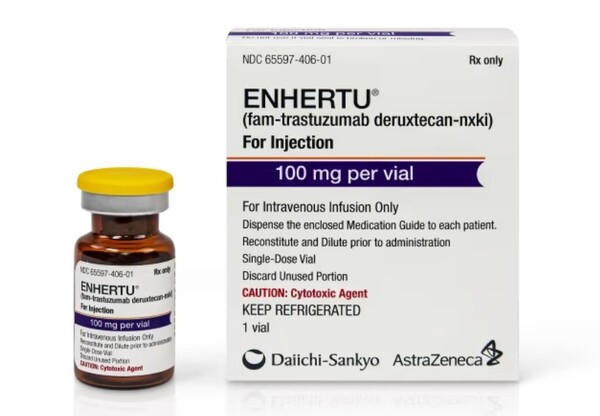The government plans to implement the use of "e-labels" for certain biopharmaceutical products, including the newly developed antibody-drug conjugate (ADC) Enhertu (trastuzumab deruxtecan) and the anti-PD-1 immunotherapy Keytruda (pembrolizumab).

Last Friday, the Ministry of Food and Drug Safety announced it has expanded the coverage of the "electronic provision of drug information (e-label)" to encompass 109 products from 27 companies for the year 2024. This expansion follows a pilot program for e-labeling on pharmaceutical products initiated last year.
The pharmaceutical e-label system allows users to access crucial drug safety information, such as efficacy, dosage, and usage precautions, which were traditionally provided as paper attachments. This information can now be accessed via company websites and mobile phones through QR codes on drug containers or packaging.
This year, an additional 82 products have been included in the 109 items covered by the e-label, alongside the existing 27. Similar to the previous year, "injectable drugs directly administered by medical institutions" remain the primary focus. However, the program's scope has been broadened to include biopharmaceuticals, leading to increased participation from global pharmaceutical companies compared to the previous year, officials said.
Seventeen new participants have joined the initiative, including GSK, Sanofi-Aventis Korea, Janssen Korea, Guerbet Korea, Sanofi Pasteur, Novartis Korea, Daiichi Sankyo Korea, MSD Korea, Ono Pharmaceuticals Korea, Korea UCB, LG Chem, Yuhan Corp., Handok, Dongkuk Pharmaceutical, Samsung Bioepis, JW Life Sciences, and JW Pharmaceutical.
The MFDS explained that after receiving applications for participation in the pilot project last month, it selected 82 products from 23 companies out of 86 products from 25 companies after excluding “medicines used in emergencies” and “medicines that can be administered in places other than medical institutions,” as the targets for this year, reflecting the opinions expressed by the public-private council and medical pharmaceutical organizations.
Manufacturers and importers of drugs subject to the new e-labeling regulations will be required to provide drug safety information electronically, either by replacing paper accompanying information or by displaying QR codes on drug containers or packaging alongside paper information.
The ministry expects that the introduction of e-labels will enable patients and medical professionals to receive the latest drug information quickly and efficiently at the medical site and reduce the inefficiency of changing the paper attachments every time there is a change in approval.
However, when participating in the pilot project, the ministry requested that drugmakers work out plans to provide medical institutions and consumers (patients) with attachments upon requests, considering information-vulnerable people, including older adults, and prepare a backup method in case of internet communication failure.
"We will continue to do our best to contribute to the improvement of public health by promptly providing the latest drug information by responding to changes in the social environment of digital transformation in various reasonable ways," a ministry official said.

